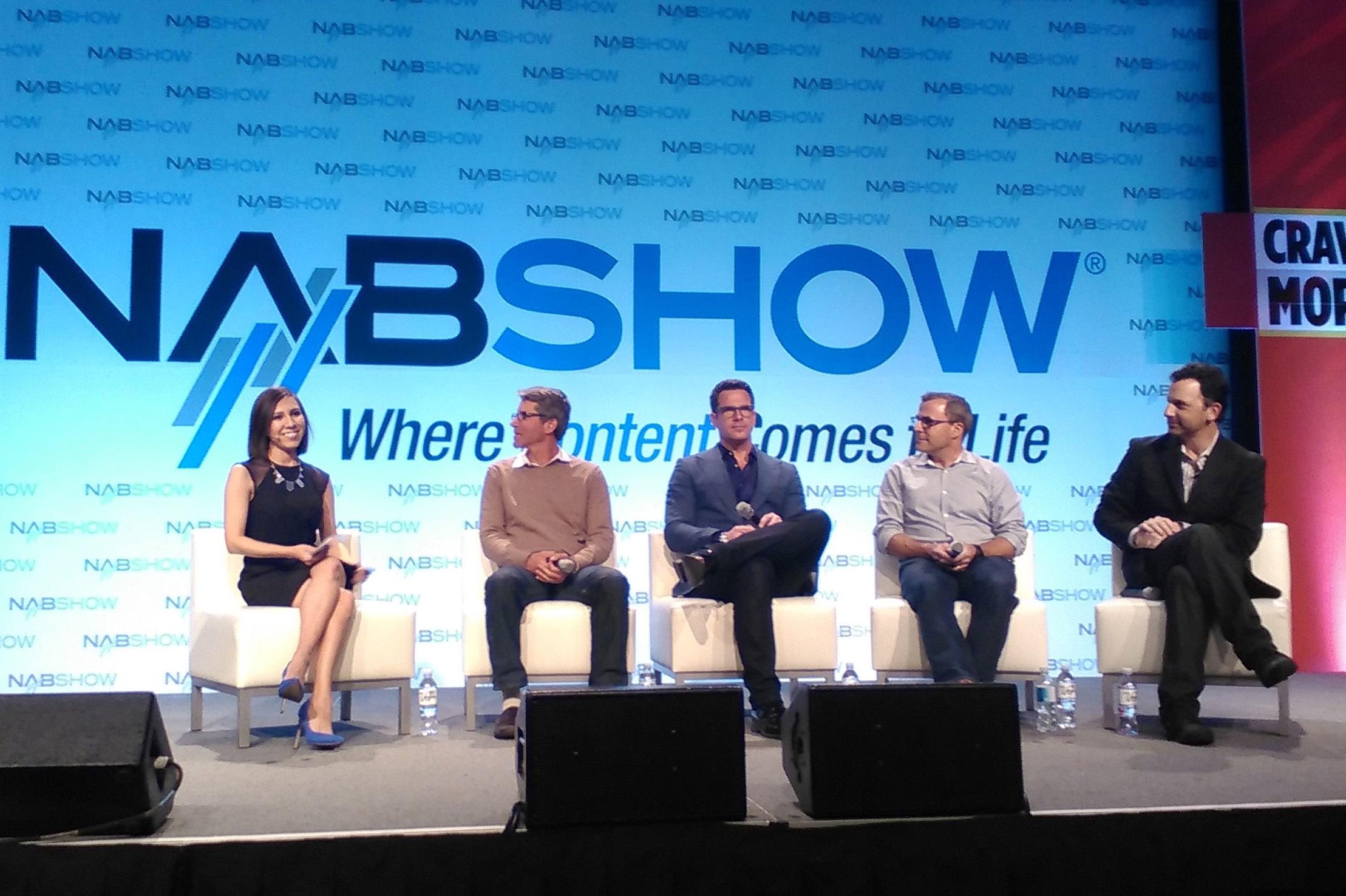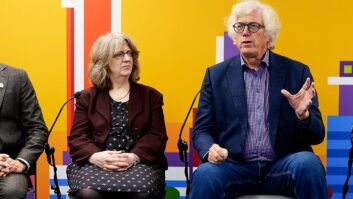
Interacting with a second screen while watching video content (‘video content’ because the TV is no longer always the primary method of consumption, nor scheduled programmes the primary type of content) has become commonplace. Content makers and advertisers hope this interaction is driven by the content being watched, and social media has become a key tool is ensuring and promoting this. A Nielson survey at the end of 2014 found that over half of people globally, on average, like to keep up with shows so they can join in the conversation on social media and 49 per cent watch live programming content more if it has a social media tie in.
Social media allows viewers to connect with the content, with each other, and in some cases with talent from the shows involved. These connections are perhaps the strongest with live TV, as viewers are able to track and comment on events as they happen. In 2014, for example, the live Brit Awards ceremony came out as the top single broadcast show, according to a Twitter TV study from Kantar Media, with 4 million tweets. Trends in social media come and go, but it seems viewers’ interaction with these platforms is here to stay. At NAB this year the topic was discussed in the panel session ‘Social media and the business of live television’, moderated by Sandra Gonzalez, senior television reporter, Mashable. Joining Gonzalez were Bruce Gersh, executive vice president, ITV Studios America; Thomas Roberts, host of MSNBC Live with Thomas Roberts; Perkins Miller, chief digital officer, National Football League; and David Wertheimer, president, digital, Fox Broadcasting Company.
Social media is now a key part of content consumption for many viewers, especially among the younger demographic. But when was the moment that social media was first recognised as being so important to television? Miller pinpoints the 2012 Olympics as the first opportunity to use social media to “amplify the storylines”, and created the idea of a Twitter tracker. This involved building in 2000-odd words associated with the Games and, as the event progressed, creating a trend map of things that were “amplified on twitter”. Social media is also important when making editorial decisions, commented Roberts. With Twitter, “there are certain stories we’ll see the amplification of” that are initially missed by a news team, which will later pick them up as a result of their popularity on social media. “People are becoming part of the story” agreed Gersh.
Twitter is not the only social media outlet viewers engage with though and “the fun of it” said Wertheimer, is “the evolution and discovering how you can do storytelling in this new evolving media”. The most surprising part of that evolution, said Gersh, is how important social media now is, having become “part of the conversation”. Wertheimer agreed, adding that “we are thinking about social media the minute a show goes into development” and although advertising shows still involves posters, billboards and the like “social media becomes a first class citizen at that table.”
But, just as a traditional adverting campaign for a TV show will involve forethought and planning, the process of creating a social media plan also requires structure. This will differ from programme to programme, as “Not all shows are created equal when it comes to social media”, said Wertheimer. “You can have shows which are great to watch, but are not great social TV shows”. One of those ‘greats’ in both respects, according to Wertheimer is Empire, a drama series which debuted on Fox in January and arrives in the UK on E4. “There were a lot of ‘omg’ moments in Empire” he explained, and as a result “all of the people from around the country felt like they were there and talking with those guys”.
Whatever the show, the key to social media success lies in “the creative: you need a great show that’s going to connect with an audience” said Gersh. This connection is stressed by Gersh, who reminded the NAB audience that social media not only allows the audience to connect with the show, but for the shows stars to reciprocate: “this is truly part of the show experience”. For Miller, chief digital officer for the National Football League, these connections strengthen fan loyalty, creating “a sense that the fans are now part of your team”. However, a fan may Tweet something about a TV programme or televised event and be lost on social media as just one of thousands of comments: what happens when a star posts something on social media that is later regretted? Miller seems unfazed, saying that although easily discoverable, he believes “[social media] is no different from someone saying something to a reporter on television”. Times have changed, and “its not like three years ago” when social media was in its infancy and stars were just getting to grips with using the platforms: nowadays, “there’s some self-policing going on”.
It is true that most users are now aware of the benefits and potential pitfalls of broadcasting their life and opinions across outlets like Twitter. But, as social media has evolved, new platforms have been established, most recently live video streaming apps Periscope and Meerkat. How does the broadcast industry decide which social media trends to embrace, and when is the right time to jump on board? Roberts has already utilised Meerkat, and the result can be viewed on his Twitter account, @ThomasARoberts. However, like many early social media adopters, he admitted to making mistakes with the first broadcast: “I didn’t understand it was live” he said, “I messed up on it and asked to start over”. However, he views this mistake as “funny” and “organic” and as a result, “people liked it and it was an authentic moment”. Roberts doesn’t say whether he intends on making Meerkat a part of his social media output, and while its in its infancy “We’ve been figuring it out as we go along and where it makes sense and where it doesn’t”. Gersh agreed and said that although “innovation is great and its great to be a first mover” the type of social media a broadcasters chooses to utilise still has to work for the type of programme or message conveyed. He admits that new technologies are “challenging” and it can get difficult trying to integrate them into a show in an “innovative way”.
The discussion concluded with a return to Miller’s opening comments on the use of social media to “amplify storytelling”. Twitter, Meerkat, Periscope and other social media platforms which are sure to emerge in the future, should be used to “further the storytelling” of content. Using a new technology as soon as it has debuted may give the impression of a forward-thinking, engaged, media-savvy company, though broadcasters should be careful. Like a “siren song” said Wertheimer, “it is easy to be lured in.” All participants concluded: establishing rules and treading carefully are the best practices to ensure storytelling on social media succeeds for a broadcaster.







